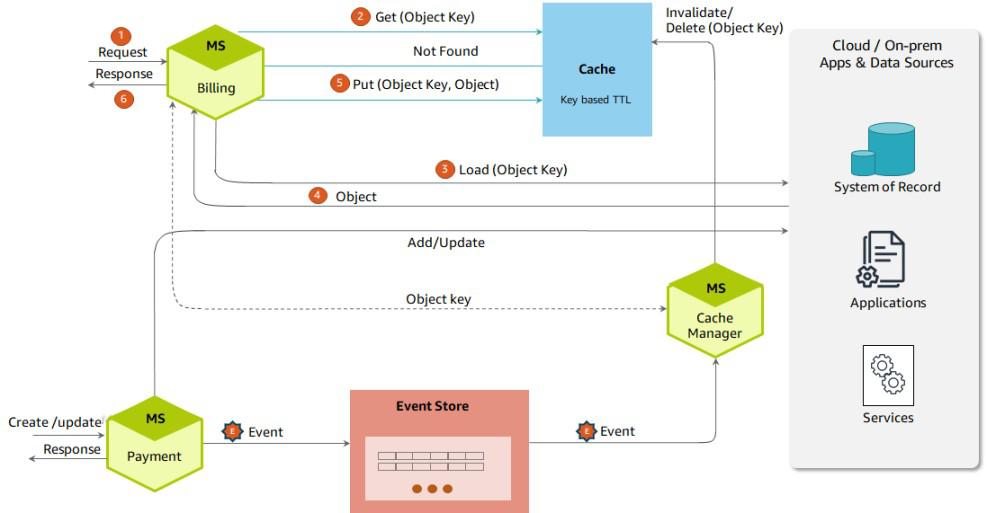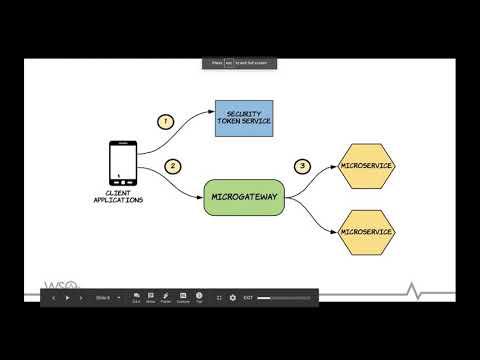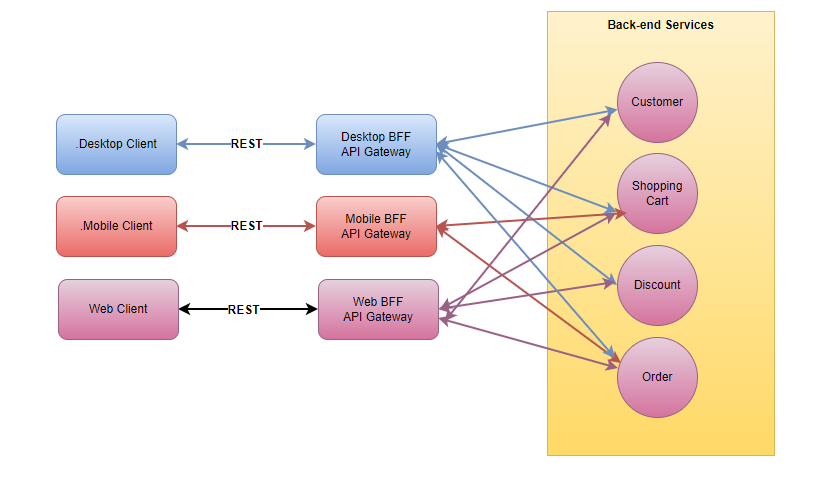In the world of cloud-native applications, it is crucial to design and manage APIs effectively. APIs are the foundation for software applications to communicate with each other and with users. Cloud-native applications are specially designed to work well in cloud environments, using the benefits of cloud infrastructure and services. APIs play a vital role in modern application design and their proper management is key to building reliable and scalable cloud-native applications.
Important Topics for API Management and Consumption Patterns
API Management Patterns
API Gateway Pattern:
Acts as a single entry point for API requests, simplifying the system’s architecture and enhancing security. It handles tasks such as request validation, rate limiting, response caching, and routing requests to the appropriate microservices.
Example:
In a cloud-native e-commerce application, the API Gateway pattern can validate customer requests, limit the number of product search requests, and cache frequently accessed product data to improve performance.

Rate Limiting Pattern:
Controls the number of requests an individual or program can make within a specific time frame. This prevents excessive API usage and ensures fair access for all consumers, maintaining optimal application performance and security.
Example:
A cloud-native social media platform can implement rate limiting to restrict the number of user profile updates that can be made in a minute, preventing abuse and ensuring a smooth user experience.
 Caching Pattern
Caching Pattern
Stores frequently requested data to reduce computational load. In the context of APIs, this pattern caches API responses, serving them quickly to users when the same request is made again. This improves application speed and minimizes latency in API usage.
Example:
A weather application can cache weather forecasts for frequently requested locations, reducing the need to repeatedly fetch the same data from external weather APIs.
 Authentication and Authorization Pattern
Authentication and Authorization Pattern
Ensuring the security of APIs is very important in cloud-native applications. Authentication is about confirming the identity of clients, while authorization is about controlling what they can access. By having strong authentication and authorization mechanisms in place, we can protect sensitive data and resources.
Example:
In a healthcare cloud-native system, strong authentication ensures that only authorized medical professionals can access patients’ sensitive medical records, which helps to keep the data private and comply with regulations.
 API Microgateway Pattern
API Microgateway Pattern
The API Microgateway pattern involves placing lightweight gateways close to microservices, so we can manage APIs efficiently at a microservices level. This pattern allows us to have fine-grained control over how APIs interact with each other, which reduces delays and improves security within the microservices ecosystem.
Example:
In a logistics cloud-native application, we can deploy a microgateway near the inventory management microservice. This microgateway can take care of authentication, caching, and rate limiting for API requests related to inventory management.

Service Mesh Sidecar as an API Gateway Pattern
Service meshes have become popular in cloud-native architectures. In this pattern, we use a sidecar proxy to handle and control API traffic between microservices. It lets us manage traffic routing, authentication, and telemetry in a very detailed way, which makes it a powerful tool for API management within a service mesh.
Example:
In a banking application, we can use a sidecar proxy within a service mesh to handle authorization and encryption when communicating between the customer account microservice and the transaction processing microservice.
 Technologies for Implementing API Management Patterns
Technologies for Implementing API Management Patterns
There are several technologies available to effectively implement these API management patterns in cloud-native applications. Some notable ones include:
- NGINX: A versatile web server and reverse proxy server that can serve as an API gateway, performing tasks such as rate limiting, caching, and routing.
- Kong: An open-source API gateway and microservices management layer that simplifies API traffic control and security.
- Redis: An in-memory data store that is commonly used for caching API responses, reducing database load and improving response times.
- OAuth 2.0: A widely adopted authentication and authorization framework used to secure APIs and control access to protected resources.
API Consumption Patterns
There are several patterns for consuming APIs efficiently:
Client SDK Pattern:
The Client SDK Pattern is a set of tools that makes it easier for developers to interact with external APIs. It simplifies the process of integrating APIs into an application by taking care of things like making API calls, handling authentication and error handling, and managing data.
Example:
Let’s say you have a mobile app that needs to process payments. You can use a payment gateway’s client SDK to effortlessly integrate payment processing functionality into your app.
Event-Driven Pattern:
The Event-Driven Pattern allows applications to instantly react to events or changes in data, instead of constantly checking APIs for updates. APIs emit events when data is modified, and applications can respond to these events promptly. This reduces the need for frequent API requests, which improves efficiency.
Example:
Imagine you have a real-time dashboard in a monitoring system. With the Event-Driven Pattern, the dashboard can subscribe to events from various microservices and display immediate updates on the system’s health and performance.

Batch Processing Pattern:
Batch Processing is a technique used when there is a large amount of data to be processed efficiently. Instead of making individual API requests, applications collect and process data in batches. This reduces the overhead of API calls and improves throughout.
Example:
A data analytics platform can use batch processing to retrieve and process large datasets from external sources, optimizing the use of resources.
.jpg) Circuit Breaker Pattern:
Circuit Breaker Pattern:
This pattern helps manage unreliable or failing APIs. It monitors API calls and if the failure rate exceeds a threshold, it stops further requests to the failing API. This improves application resilience and prevents cascading failures.
Example:
In an e-commerce platform, if the payment gateway API is consistently failing, the circuit breaker pattern can temporarily stop transactions through that API to avoid negative impacts on the shopping experience.

Direct Frontend-to-Microservices Communication Pattern
The Direct Frontend-to-Microservices Communication Pattern allows frontend components to communicate directly with microservices, without going through an API gateway. This can be useful in scenarios where low-latency communication is crucial, but it may require additional security measures and management of complexity.
Example:
An online gaming platform can enable direct communication between game clients and game servers to minimize latency and ensure a seamless gaming experience.
 Frontends Consuming Services Through API Gateway Pattern
Frontends Consuming Services Through API Gateway Pattern
On the other hand, the Frontends Consuming Services Through API Gateway Pattern routes frontend requests through an API gateway. This provides a central point for managing security, rate limiting, and caching, making frontend-to-backend communication simpler.
Example:
An e-commerce application can use an API gateway to ensure consistent security and authentication across different frontend components that interact with product catalog and inventory microservices.
Backend for Frontends Pattern
The Backend for Frontends (BFF) Pattern involves creating specialized backend services tailored to the needs of specific frontend applications. Each frontend has its dedicated BFF, optimizing API calls and data retrieval for the frontend’s unique requirements.
Example:
In a cloud-native healthcare application, different BFF services can be developed to serve the distinct needs of patient-facing mobile apps and clinician-facing web applications. This helps streamline data access and minimize data transfer.

Conclusion
In conclusion, designing and implementing API management and consumption patterns are crucial in modern cloud-native software development. Patterns like API Gateway, Rate Limiting, Caching, Authentication & Authorization ensure the security and reliability of APIs. On the other hand, patterns like Client SDK, Event-Driven, Batch Processing, Circuit Breaker, and other introduced patterns enhance API consumption efficiency. By incorporating these design patterns into your cloud-native application architecture and leveraging the appropriate technologies, you can build scalable, resilient, efficient, and secure applications for managing and consuming APIs.
Share your thoughts in the comments
Please Login to comment...